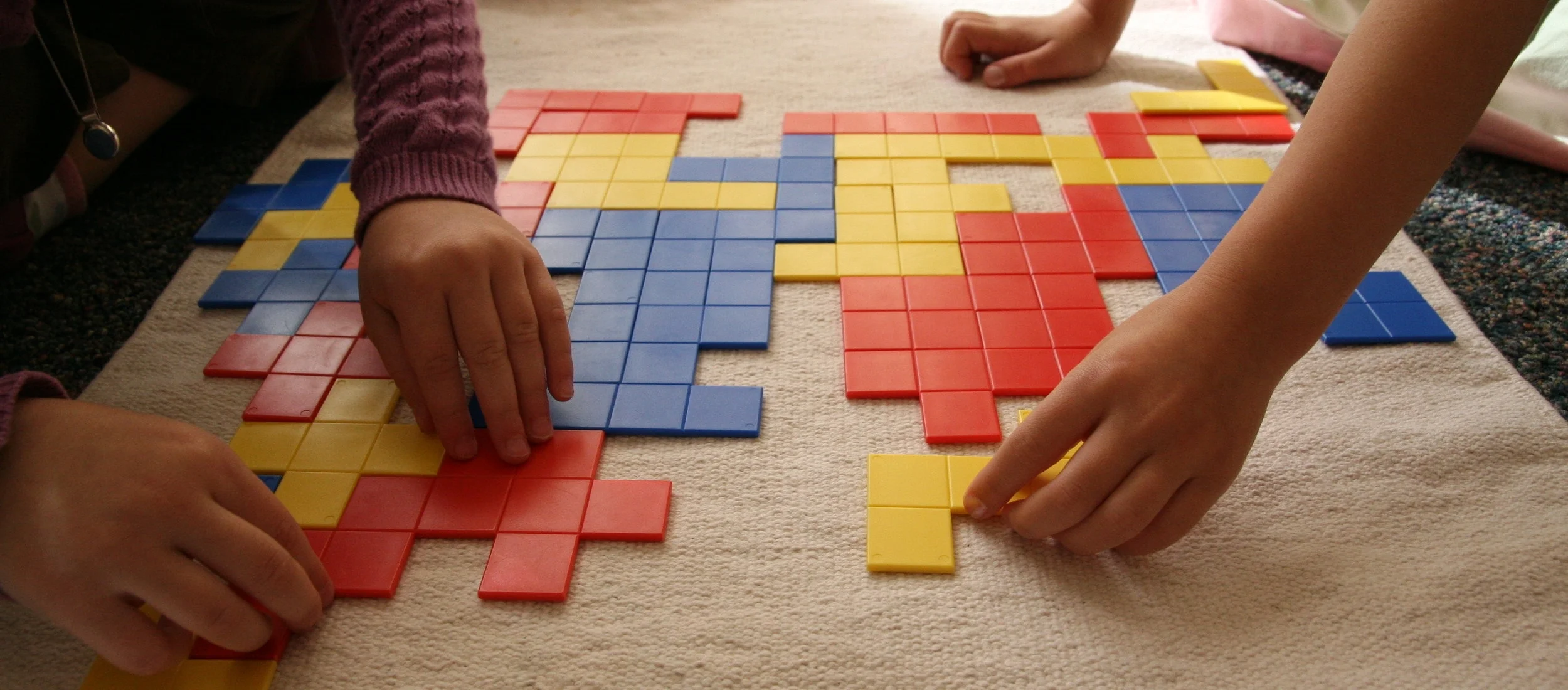There are four basic areas of the Montessori classroom:
Sensorial, Practical Life, Language, and Math.
Sensorial: In this area, the child discovers and learns through the senses. Through the work in this area of the classroom (color tablets, sound cylinders, knobbed cylinders, pink tower, etc.), the child refines his/her senses and is able to learn in the classroom as well as outdoors using all of their senses.
Practical Life: This area provides real materials for children to use in real situations to encourage independence, increase concentration, coordination, and develop a sense of order. Children may pour water from glass pitchers, hammer nails into a log, work with tweezers, scissors, and more.
Language: In this area, Maria Montessori’s concept of natural learning is used to help students to read, speak, and listen for real reasons. Thank you notes, messages, lists of items needed for field trips and books to help us learn and laugh are examples of real language for real purposes. The Montessori-designed metal insets make writing easier. The moveable alphabet allows children to identify the letter sounds (a pre-reading activity), hold, and manipulate letters. The children continue learning by building names and writing stories with the letters of the moveable alphabet. The children learn to write the same way they learned to talk—by doing it. Their scribbles today are their words tomorrow. Ask your child to read their “writing” to you, or to tell you about it. This encourages the child to write to communicate. We encourage the children to write in school. Your support of your child to write at home will encourage him/her to write even more.
Math: This area allows the child to begin to work at a concrete level using objects to group sets. The red and blue rods enable the child to get a physical sense of quantity and associate this with the numeral that is the symbol for the quantity. The golden bead materials let the child build up to the quantity of 1,000 in a visible way and learn place value. The child progresses from the concrete to a more abstract level of work.
Other curricular areas:
Geography: In this area, the child is given a view of the “whole” first and then is prepared to study narrower divisions. The physical aspect of geography includes water and land formations. The political aspect includes the globe, maps, continents, capitals, and flags.
Science: The approach in this area is one of experimentation and discovery. The child may experiment with magnets or sinking and floating objects. The adult may ask the child to make predictions, encouraging the child to think and formulate answers. The children also learn real science through the care of classroom animals. They feed, handle, clean, and research the animals in the room. Some lucky children even take an animal home for vacation. Please consider volunteering to be a vacation home for your child’s classroom animal.
“Encore Subjects:” Art, Music, and Physical Education, are made available to students from the ages of 5 and older once during each six-day cycle. Students at the 5-7 level and up also take Italian once in a cycle. Computers are available in classrooms for student use. In addition, we have 2 computer labs and 2 computer mobile laptop carts for large group computer instruction.

